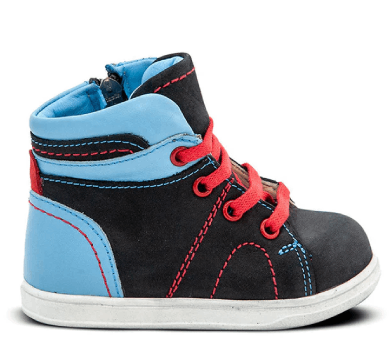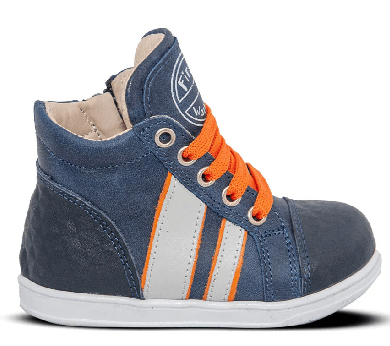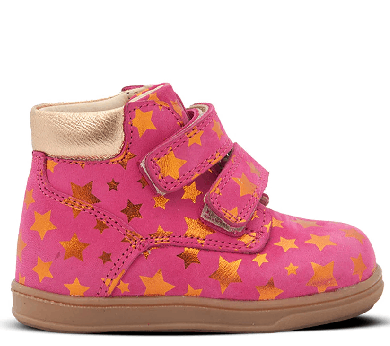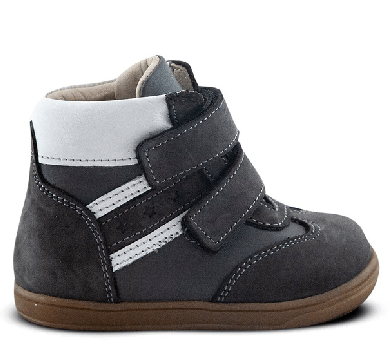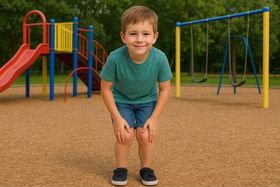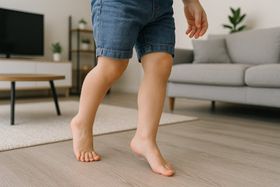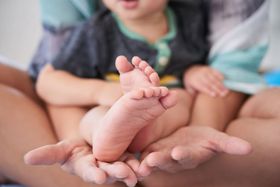Wide Gait in Toddlers: What Parents Need to Know
You've probably seen it: your little one navigating the world with a distinct, almost comical, wide-legged walk. But is it all just part of growing up?
Updated July 31, 2025
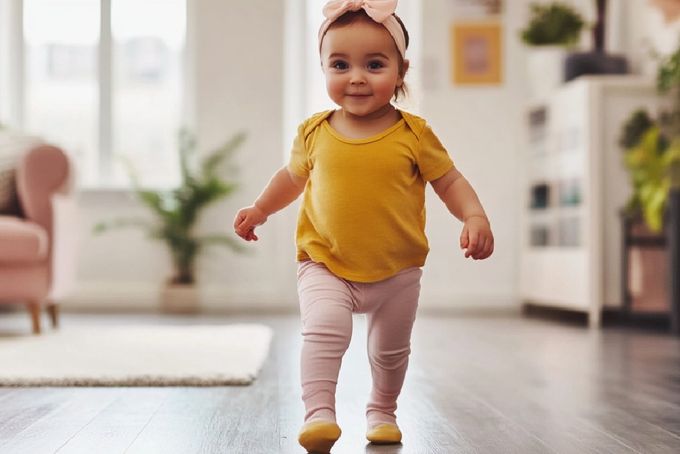
Seeing your toddler walk with their legs spread wide is pretty common. It might even look a little funny! But you might also wonder, "Is this how they're supposed to walk?"
You might find yourself watching them closely and comparing them to other kids. It's easy to worry if something isn't quite "normal." It's natural to want to make sure your child is developing well.
Luckily, understanding why toddlers sometimes walk this way can help you feel better. This guide will explain the usual reasons for this kind of walk, tell you when you should be concerned, and give you the info you need to help your child grow strong and steady.
» Check out the best supportive shoes for toddlers
What is Wide Gait in Toddlers?
A wide gait in toddlers is a common walking pattern characterized by feet positioned greater than hip-width apart.
This walking style typically includes the following:
- Bowing of the legs
- Outward rotation of the feet (out-toeing)
- External rotation of the hips
- A waddling motion with side-to-side swaying of the body.
» Are your kids' knees pointing inward? Learn more about knock-knees
5 Common Causes of Wide Gait in Toddlers
Wide-based gait in toddlers can result from various factors. While it's often a normal developmental phase, you should understand the causes that can help you identify when your little one might need help.
1. Anatomical Causes
Toddlers may develop a wide gait due to several structural factors:
- Body Structure: Natural variations in height, pelvis width, and hip angle can influence walking patterns
- Joint Laxity: Increased joint flexibility may require a wider stance for stability
- Bone Development Issues: Conditions like rickets (softened bones) or genu varum (bow legs) can alter walking mechanics
- Hip Stability Challenges: Conditions such as coxa vara (decreased hip angle) may require compensation through a wider base
» Check out the key baby developmental milestones
2. Congenital Conditions
Some children are born with conditions that affect normal walking development:
- Developmental Dysplasia of the Hip happens when the hip joint and surrounding muscles fail to develop properly. This condition can cause underdeveloped hip muscles, which will force your kid to adopt a wider stance for support.
- Clubfoot, a common congenital foot condition, can significantly impact gait. It may appear as unilateral (one-sided) or bilateral (both feet). If left untreated, it affects the proper development of the foot, knee, and hip muscles, which is why your kid adopts a wide stance.
3. Neurological Factors
Neurological factors may also cause abnormal gait in your toddler.
The developing nervous system plays a crucial role in gait patterns:
- Normal Development: When children first begin walking, their nervous systems haven't fully matured to support adult-like walking patterns
- Balance and Control: Limited muscle control, balance, and sensory processing naturally lead to a wider stance
- Neurological Conditions: Disorders such as cerebral palsy, ataxia, and spina bifida can significantly impact gait development and maintenance
- Compensatory Strategies: Children may use high arm positions and wider stances to counter forward momentum and prevent falls
» Explore the reasons behind babies' stinky feet and how to fix them
4. Developmental Considerations
A child's developmental journey influences their walking pattern:
- Balance Strategies: Early walkers naturally adopt a wider base to maintain stability
- Muscle Development: Inadequate development of hip strength during milestone progression can lead to wide-based walking
- Case Example: Some children present with delayed walking (beyond 14 months), balance difficulties, and problematic sitting postures like W-sitting, indicating underlying issues with hip adductors, internal rotators, and core strength
5. Genetic Disorders
Several genetic conditions can result in characteristic wide gait patterns:
- Muscular Dystrophies: Conditions like Duchenne muscular dystrophy (DMD)
- Limb Girdle Muscular Dystrophy: A subtype that specifically affects the hip and lower limb muscles
- Progressive Nature: These conditions often produce waddling or wide-based gait patterns from the onset of walking
7 Ways to Treat Wide Gait in Toddlers
1. Proper Footwear for Gait Support
Appropriate shoes can play a significant role in toddler gait correction when no major underlying condition is present. Therapeutic footwear should:
Be made from breathable, flexible materials like canvas or silicone.
Feature sturdy outsoles with good traction for stability.
Include adjustable straps or laces for a secure fit.
Provide ankle and arch support to guide natural foot movement.
2. Encouraging Environmental Exposure
Exposing toddlers to various walking surfaces can strengthen muscles and improve balance. Walking on grass, sand, concrete, and uneven terrains enhances proprioception and encourages a more natural gait pattern. When no serious pathology is present, this simple strategy can be highly effective.
3. Physical Therapy for Gait Abnormalities
Structured physical therapy may be recommended for toddlers with muscle weakness or neurological factors influencing gait. Techniques include:
Gait Training: Parallel bar exercises, obstacle courses, and visual feedback help develop better walking patterns.
Strengthening Exercises: Activities like bridging, kneeling, and core stabilization exercises enhance posture and stability.
Aquatic Therapy: Water-based exercises provide low-impact strength training and improve coordination.
4. Occupational Therapy for Functional Improvement
Occupational therapy focuses on daily movement patterns and coordination. Strategies include:
Climbing small ladders or steps encourages proper foot placement.
Navigating obstacle courses to challenge balance.
Sensory integration activities, such as walking on textured surfaces, enhance motor learning.
5. Orthotic Devices for Alignment Support
In some cases, orthotic supports like shoe inserts or Ankle-Foot Orthoses (AFOs) can assist with foot and ankle positioning. For hip-related conditions, specialized braces may help align the lower extremities.
6. Medical Interventions When Necessary
If an underlying medical condition is contributing to the toddler’s wide gait, additional treatments may be required. These can include:
Hip Dysplasia Treatment: Pavlik harnesses, casting, or surgery, depending on severity.
Neurological Condition Management: Medication, specialized therapies, and multidisciplinary interventions.
7. Home Exercise Programs for Continued Improvement
Therapists often provide home exercise routines to reinforce progress. Parents can encourage improvements through:
Balance games and obstacle courses.
Marching in place to refine foot placement.
Walking along a taped line to promote a narrower step width.
When to Consult a Pediatrician
While a wide gait often resolves naturally as toddlers develop better balance and coordination, consult your child's doctor if you notice:
- Persistent wide gait beyond age 3-4
- Regression in walking ability
- Pain or discomfort while walking
- Asymmetry in the walking pattern
- Excessive toe walking or foot positioning issues
When to Expect Improvement
The timeline for improvement varies based on the underlying cause of the wide gait, the child's age and developmental stage, the consistency of therapeutic interventions, and the presence of other developmental factors.
Most children show gradual improvement over weeks to months with appropriate intervention, though some conditions may require longer-term management.
How to Support Your Child’s Gait Development
Ensuring proper gait development in children requires a balance of movement, nutrition, and structured routines. Here are two key strategies:
Encourage At Least 2 Hours of Outdoor Play
Outdoor play is crucial for strength, endurance, balance, and coordination. Aim for activities in places like:
- Playgrounds (climbing structures, swings)
- Parks (running, jumping)
- Beaches (walking on sand for foot strengthening)
Tip: Assist your child if they struggle with activities like climbing a slide or balancing on uneven surfaces. Let them explore independently, but offer support when needed.
Establish Healthy Routines at Home
A structured daily routine enhances core strength and motor skills. Try these:
- Create a designated play area for safe movement.
- Encourage chair sitting & back support to promote core and hip stability.
- Maintain a healthy sleep and meal schedule to support energy levels and muscle recovery.
Tip: Incorporate fun movement-based games at home, like crawling tunnels or balance activities
» Help your kid's arches develop with supportive shoes
Moving Forward with Confidence
We hope this information has helped you better understand the nuances of a wide gait in toddlers. Remember, you are your child's best advocate. By being informed and observant and by partnering with your pediatrician, you can ensure your little one develops healthy and confident movement skills.
Don't hesitate to ask questions, and trust your instincts! When children are ready to explore the world on their own two feet, selecting the right First Walkers shoes is crucial.
You can also get them specialized toddler shoes from First Walkers, which prioritize lightweight construction, flexibility, and a wider toe box. These can be beneficial for toddlers, including those with a naturally wider gait, as they learn to walk.
» Browse our collection of toddler shoes
Disclaimer: First Walkers' information is intended for educational and informational purposes related to toddler footwear and feet. We encourage you to consider individual circumstances and consult qualified orthopedists about specific conditions.

